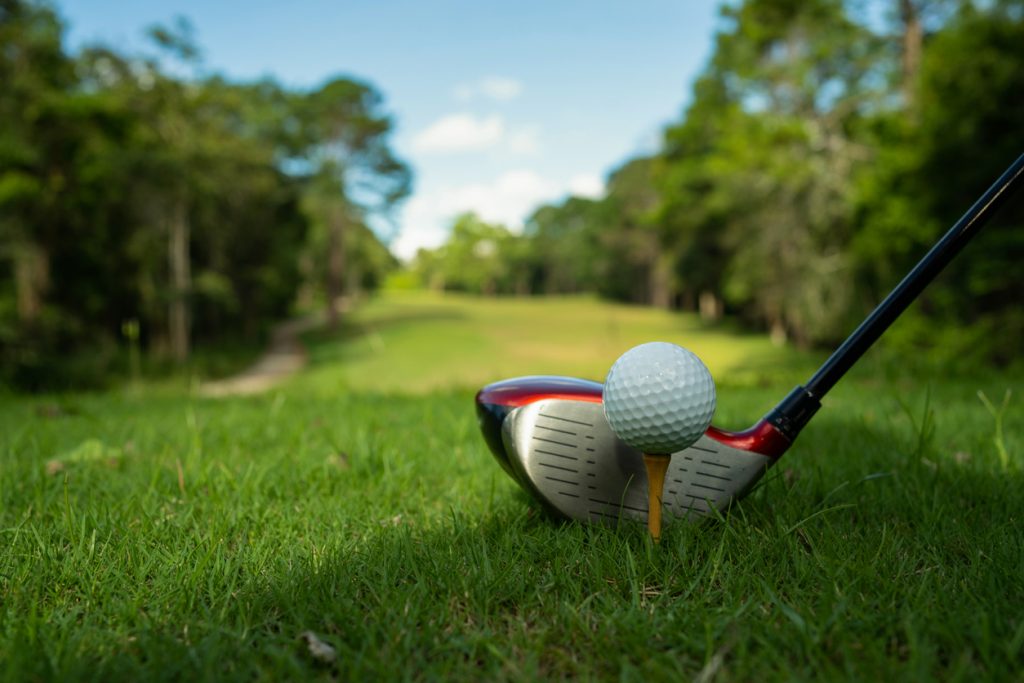Have you ever wondered why golf balls have dimples instead of a smooth surface? We don’t blame you—even experienced golfers question this after years of overlooking it.
Dimples are to golf balls what aglets are to shoelaces. You don’t give them much thought until someone points them out, and then you can’t rest until you know their purpose.
Here, we cover why golf balls have dimples and how to choose the best design for your playing style.
Why do golf balls have dimples?
Golf balls may appear deceptively simple, but their exterior is carefully designed for a reason beyond aesthetics.
The dimples on golf balls are the unsung heroes of the sport, playing a pivotal role in shaping the trajectory, distance, and accuracy of each shot. Here’s why they’re essential to your game:
- increased lift—as air flows over the dimpled surface, it clings to the ball longer, which generates lift and helps the ball stay in the air longer, resulting in a higher trajectory and increased distance
- reduced drag—dimples create a turbulent boundary layer of air around the ball as it flies, which delays the separation of air and allows the ball to slice through the air with less resistance
- improved stability—dimples contribute to the ball’s stability during flight by preventing it from wobbling or veering off course, making it more accurate and predictable in the trajectory
- spin control—dimples influence the amount of backspin or topspin a golfer can impart on the ball, which is crucial for shaping shots, and different dimple patterns can lead to varying levels of spin
As you can see, the dimples on a golf ball transform it from a smooth sphere into a carefully engineered aerodynamic tool.
They help golfers achieve greater distance, accuracy, and control by manipulating the forces acting on the ball as it travels through the air.
So, next time you tee up, remember that those dimples are the secret sauce behind every impressive drive and precise approach shot.
How were the dimples on golf balls created?
Golf balls didn’t always have dimples. Their invention was down to sheer coincidence during the mid-1800s.
Robert Adams Paterson invented the gutta-percha ball in 1848, which was crafted using dried Malaysian sapodilla tree sap with a rubber feel.
The balls had a smooth surface, but once golfers had damaged them, they discovered they performed more consistently.
This prompted inventors to begin making indentations in new balls, which led to them having a much more powerful and reliable ball flight, and the design has been adapted and mastered throughout modern history.
Advanced technology is now used to thoroughly design and test dimple patterns to optimise them for many purposes. We talk more about finding the ideal golf ball dimple pattern below.
How many dimples should a golf ball have?

Currently, the ideal range for the number of dimples on a golf ball is between 300-500. Anything outside this range isn’t considered optimal for performance, which is why most popular manufacturers adhere to it.
Two of the most popular golf balls, Srixon AD333 and Titleist Pro V1, have less than 400 dimples—the former has 338, while the latter has 388. Both have tetrahedral dimples.
It’s difficult to state a clear difference between the two, as each ball has a different outcome depending on the golfer, their technique, and other elements of its design, but many say the Pro V1 gives slightly more distance.
Many factors, such as the depth of the dimples and the inner mantle design of the ball, contribute to its overall performance, and only manufacturers with specialist knowledge and testing equipment can properly track the effects of slight changes in design.
The Titleist Pro V1’s tetrahedral dimple design had over 60 different versions tested before the manufacturer landed on a final model—that’s how much thought goes into the design process.
Choosing a ball with a similar number of dimples to the ones the professionals use is always good practice, alongside checking out reviews for which is best for your swing.
You can also get fitted for golf balls as you would your clubs, which could help you get the most out of your equipment.
How do I know which golf ball dimple pattern is best?
Dimple patterns are specific to each golf ball’s design but usually feature a mixture of shallow and deeper dents for optimal performance. They are usually round and have tetrahedral-shaped indents.
Some popular designs still differ, however—Callaway Solaire balls are a hit with golfers and feature hexagonal dimples rather than rounded ones. They supposedly provide better low-speed lift, increased stability, and reduced drag.
Typically, the deeper the dimples are, the lower the ball flight, and the shallower they are, the higher it is—having a mixture of the two creates a well-balanced and consistent trajectory and distance.
Without specialist equipment and knowledge, it can be difficult to choose a golf ball dimple pattern for your game.
So, you might find it useful to leave this to the manufacturers and instead look at the golf balls’ characteristics to know whether they suit your playing style.
For example, one ball may provide a huge amount of spin while another could be designed to reduce it.
Dimple patterns certainly affect these things, but the science involved in explaining how they affect each aspect is complicated. But if you want to learn more about the technical aspects, check out this video.
As with the number of dimples on a golf ball, it’s best to stick to those with proven performance, whether they’re a market favourite or used by the pros.




